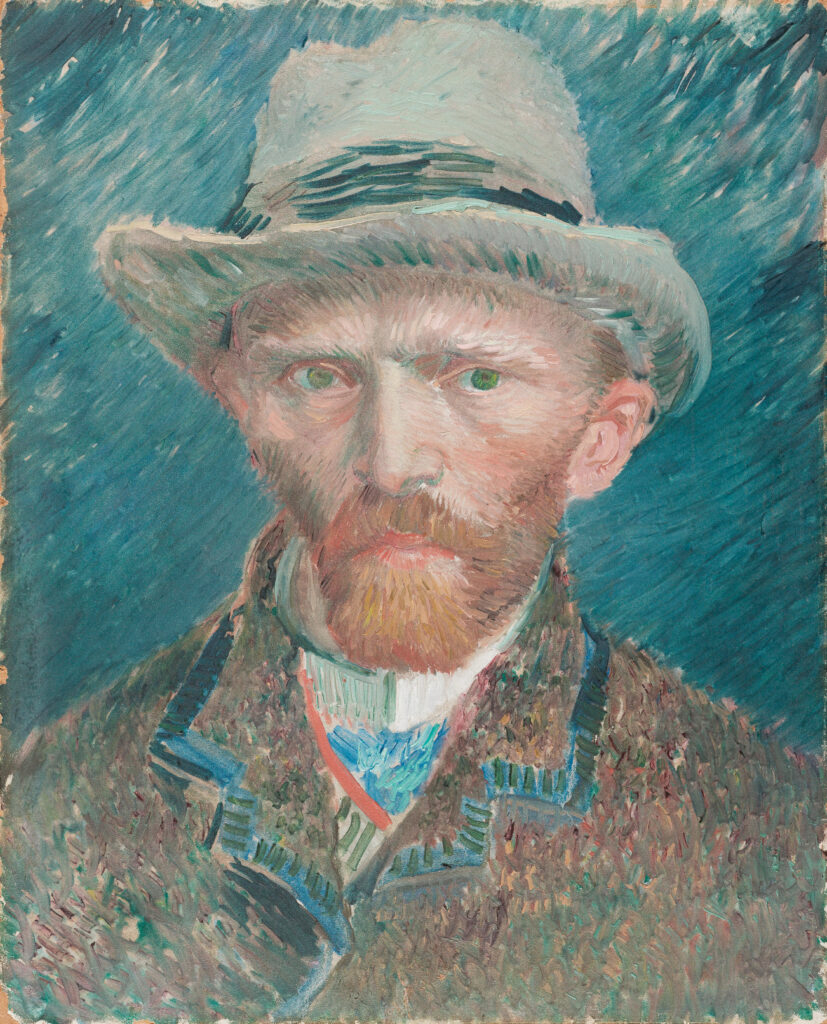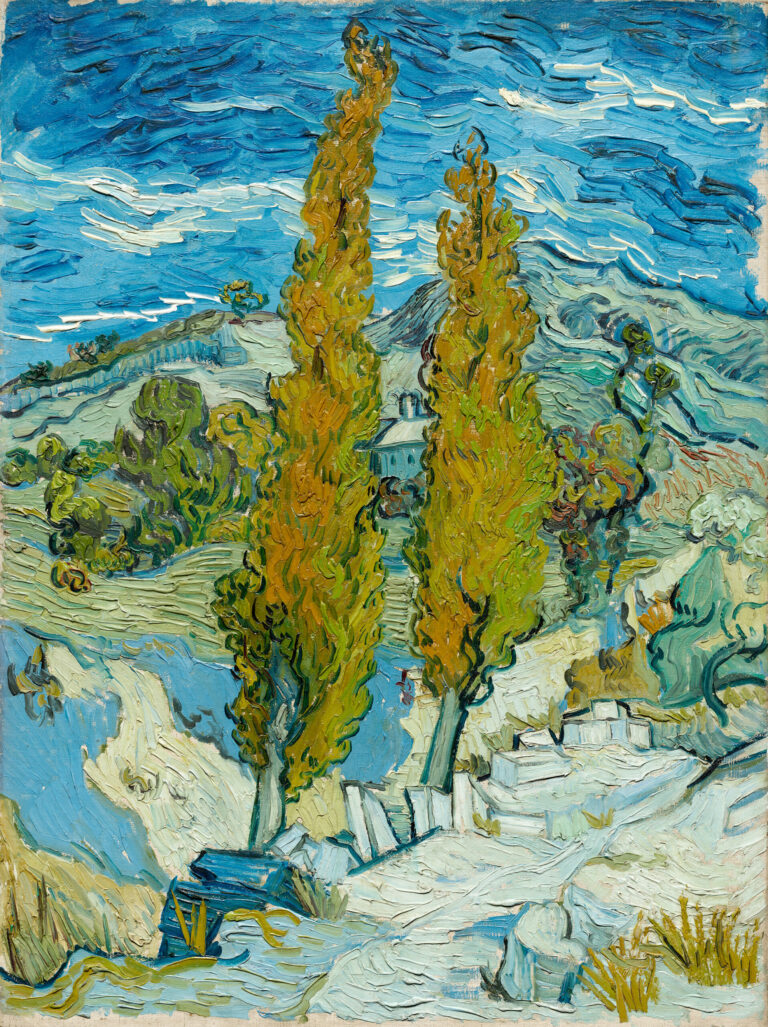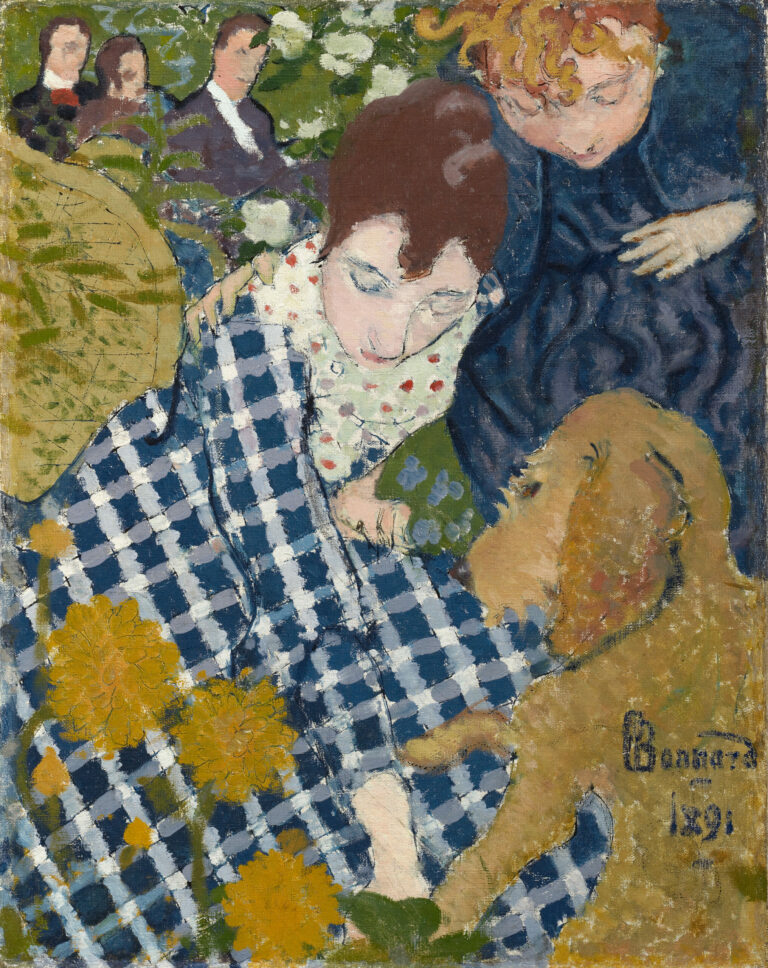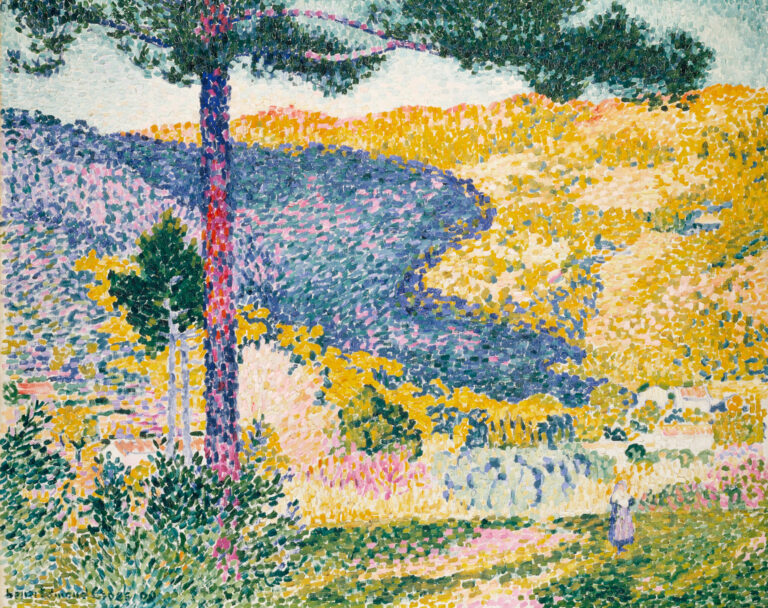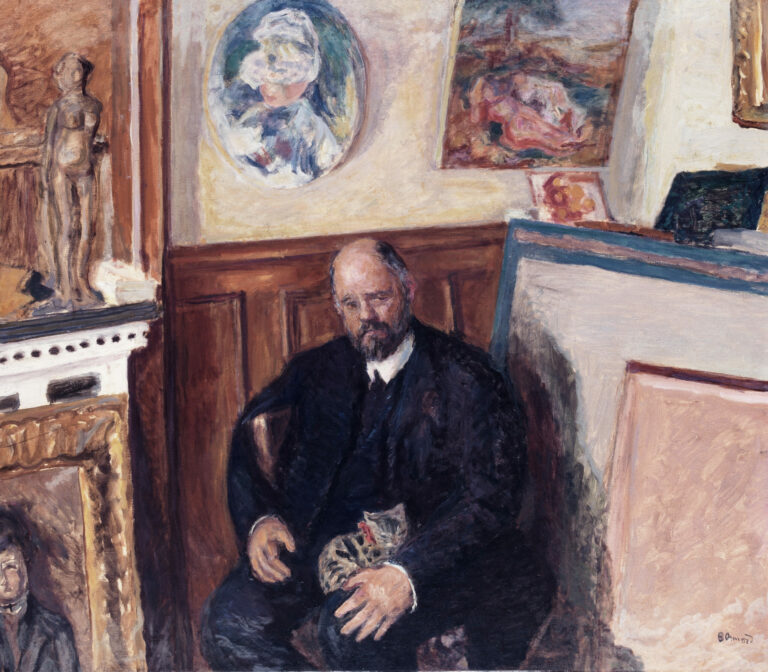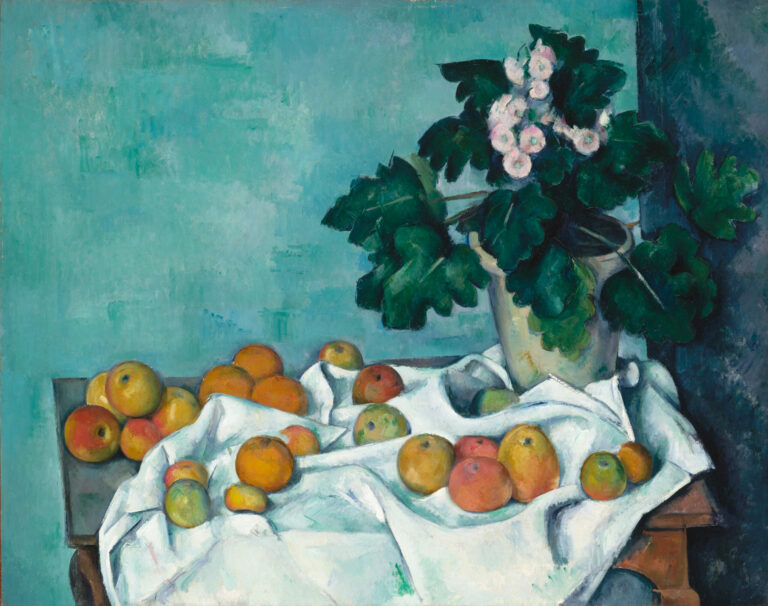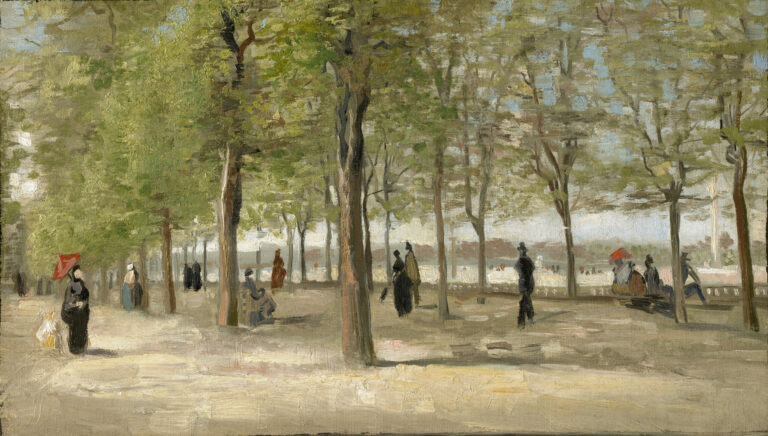This 1887 self-portrait invites us into the intimate world of Vincent van Gogh during a transformative period when the artist was refining his expressive style in Paris.
The penetrating gaze of the artist, highlighted by piercing green eyes, confronts the viewer with remarkable intensity. Van Gogh presents himself dressed in a thick brown coat and wide-brimmed gray hat.
The blue-green background, rendered with vibrant, directional brushstrokes, creates a dynamic halo around the figure—a characteristic technique of his maturing style. The palette, dominated by ochres, greens, and blues, reflects the influence of the Parisian artistic circles he frequented during this period. The energetic application of paint, particularly evident in the rendering of the coat and hat, already anticipates the expressive swirls that would define his future work. This portrait reveals an artist on the threshold of a major artistic transformation, balancing profound introspection with bold technical experimentation.
Further Information:
- Self-Portrait, by Vincent van Gogh, 1887
- 42 x 34 cm
- The Rijksmuseum, Amsterdam
- https://www.rijksmuseum.nl/en/collection/object/Self-portrait–72f97ac66c33f86b161cd51d62f7d365
Vincent van Gogh (1853-1890), an iconic figure of Post-Impressionism, created more than forty self-portraits throughout his tumultuous career. After arriving in Paris in 1886, he discovered the Impressionists and lightened his palette under the influence of Monet, Pissarro, and Seurat.
This Parisian period, marked by decisive encounters with Toulouse-Lautrec and Gauguin, represents a turning point in his artistic evolution. Van Gogh developed his unique style during this time, characterized by expressive brushwork and innovative use of color, which would later lead to his masterpieces created in Arles, Saint-Rémy, and Auvers-sur-Oise.

